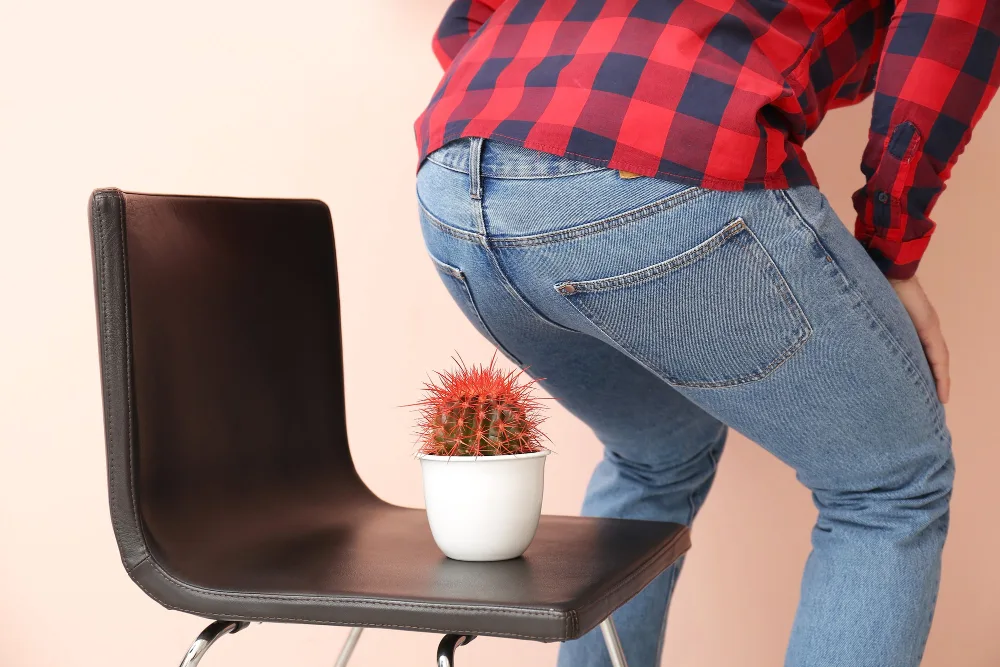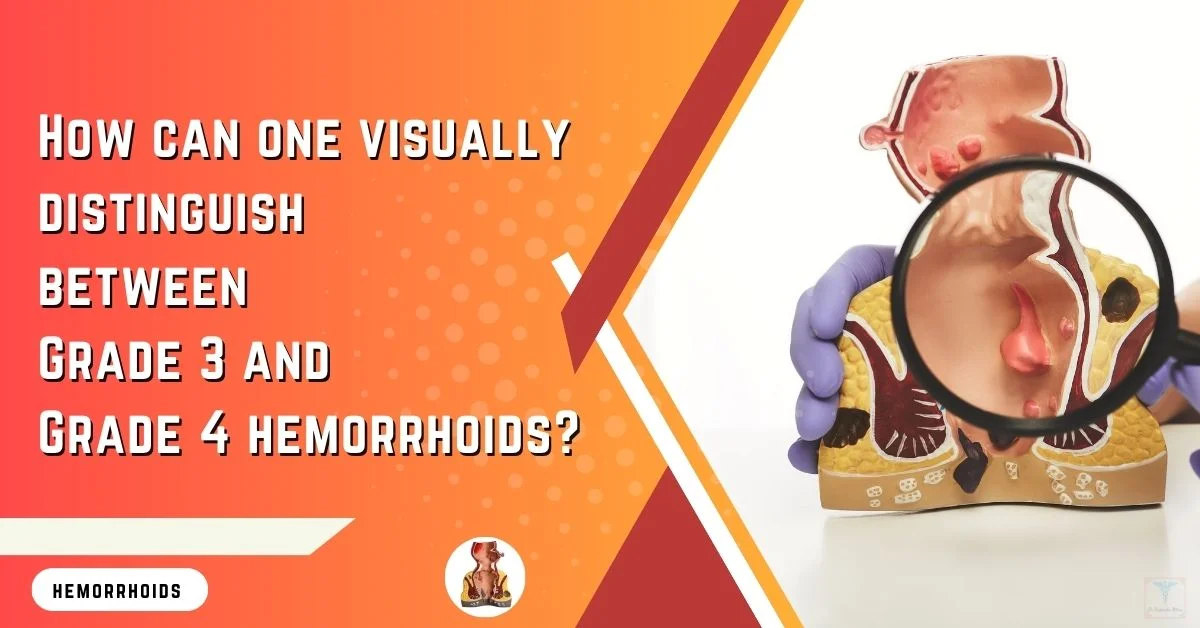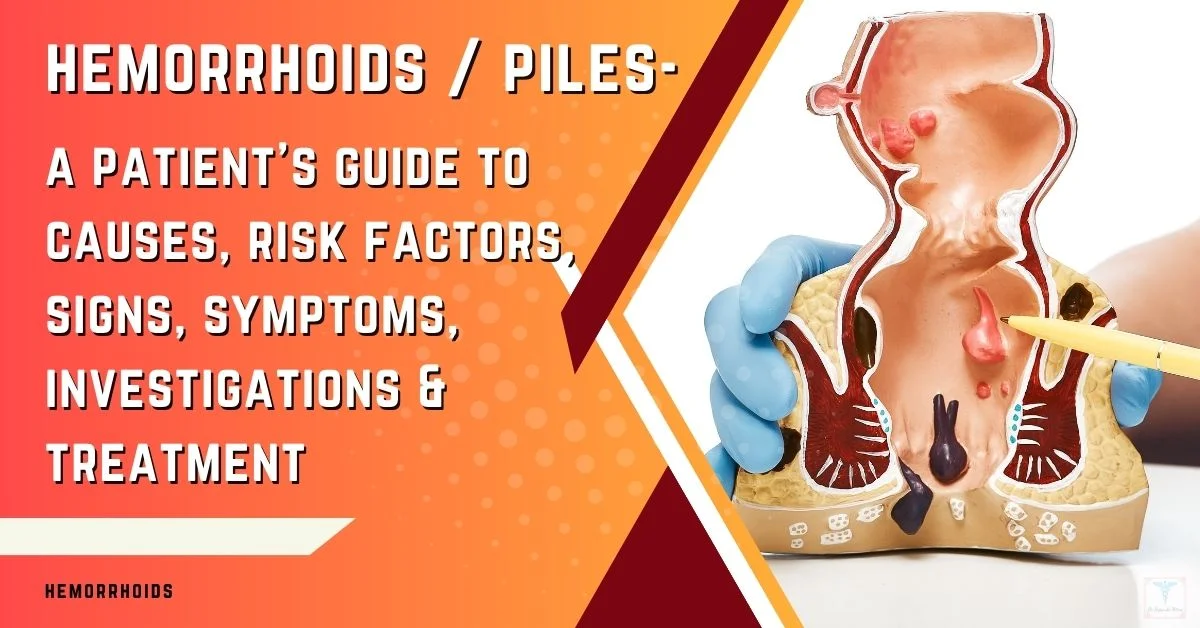Identifying the physical characteristics of higher-grade hemorrhoids can help evaluate your symptoms and determine if you may have a grade 3 or grade 4. So, it is necessary for you to understand what Grade 3 and Grade 4 hemorrhoids look like to properly evaluate your condition.
This guide will explain their typical appearance, when they prolapse, associated signs and symptoms, and what distinguishes them from early grades. Recognizing these visual cues can aid in diagnosis and seeking proper treatment.
Grade 3 And Grade 4 Hemorrhoids: Identify Them Quickly
- Grade 3 hemorrhoids visibly prolapse during bowel movements but go back inside.
- Grade 4 hemorrhoids exhibit persistent external prolapse that never retracts.
- Later grades appear as swollen, enlarged tissue protruding from the anus.
- Prolapse is extensive with grade 4 and frequent with grade 3.
- Lower grades do not prolapse chronically and are harder to visualize.

What Does Grade 3 Hemorrhoids Look Like?
Grade 3 hemorrhoids visibly prolapse, or protrude, outside of the anus during bowel movements, exertion, or even while standing up and walking around. The tissue balloons out, often appearing purple, blue, or red in color.
It looks swollen and bumpy, like a sac filled with enlarged veins. The prolapsed hemorrhoid may be the size of a pea or become as large as a grape before going back inside the rectum on its own.
It leaves behind an external ring of swollen tissue. Bleeding, discharge, soiling, and excessive moisture around the anus may occur.
What Does Prolapse Look Like?
Prolapsing grade 3 hemorrhoidal tissue emerges from the anal opening and extends out slowly during bowel movements. It may remain briefly exposed before the tissue automatically retracts inside.
Prolapse is apparent from the doughnut-shaped lump that you can see and feel passing through. After defecation, a fleshy, swollen lump may remain on the outside, taking minutes to hours to return inside.
Associated Signs and Symptoms
In addition to visible prolapse, grade 3 hemorrhoids commonly cause discomfort, fullness, burning, and itching around the anus.
They are prone to bleeding and mucus discharge, leading to soiling. Anal swelling, irritation, and pain frequently occur.
How Grade 3 Differs from Grades 1 & 2
Minor types of hemorrhoids, such as Grade 1 hemorrhoids cannot be seen or felt from the outside. Grade 2 hemorrhoids briefly prolapse through the anus during bowel movements but retract immediately after; they are not readily visible externally.
Grades 1 and 2 do not remain prolapsed outside the anus for prolonged periods.
What Does Grade 4 Hemorrhoids Look Like?
Grade 4 hemorrhoids exhibit an extensive amount of protruded anal tissue in the form of a large, bulbous mass outside of the anus. Unlike grade 3, the prolapse does not retract back inside the rectum at all and remains constantly exposed.
The protruding tissue appears swollen, bunches up in folds, and may become ulcerated, inflamed, or thrombosed. Mucus discharge and dampness around the anus are common.
Chronic External Prolapse
The distinguishing sign of grade 4 hemorrhoids is persistent prolapse that never returns inside.
The external lump remains visible during all activities of daily living, not just bowel movements. The tissue may gradually enlarge over time. Extensive skin tags can also develop.
Associated Signs and Symptoms
In addition to constant prolapse, grade 4 hemorrhoids produce symptoms like seepage, staining, severe pain, bleeding, and difficulty cleaning after a bowel movement. Skin irritation, discomfort, and swelling frequently occur.
How Grade 4 Differs from Grades 1-3
Lower-grade hemorrhoids do not chronically prolapse through the anus. Grade 1 and 2 hemorrhoids only briefly protrude with bowel movements before retracting.
Grade 3 prolapses but reduces spontaneously, while grade 4 remains constantly exposed outside.
Final Note From Dr. Rajarshi Mitra
I hope these descriptions have helped illustrate the characteristic appearance of higher-grade hemorrhoids. Recognizing these visual distinctions can aid in identifying the grade and pursuing proper treatment.
If you have grade 3 and grade 4 hemorrhoids, you must consult a medical practitioner. Please let me know if you need any clarification or have additional questions!



















